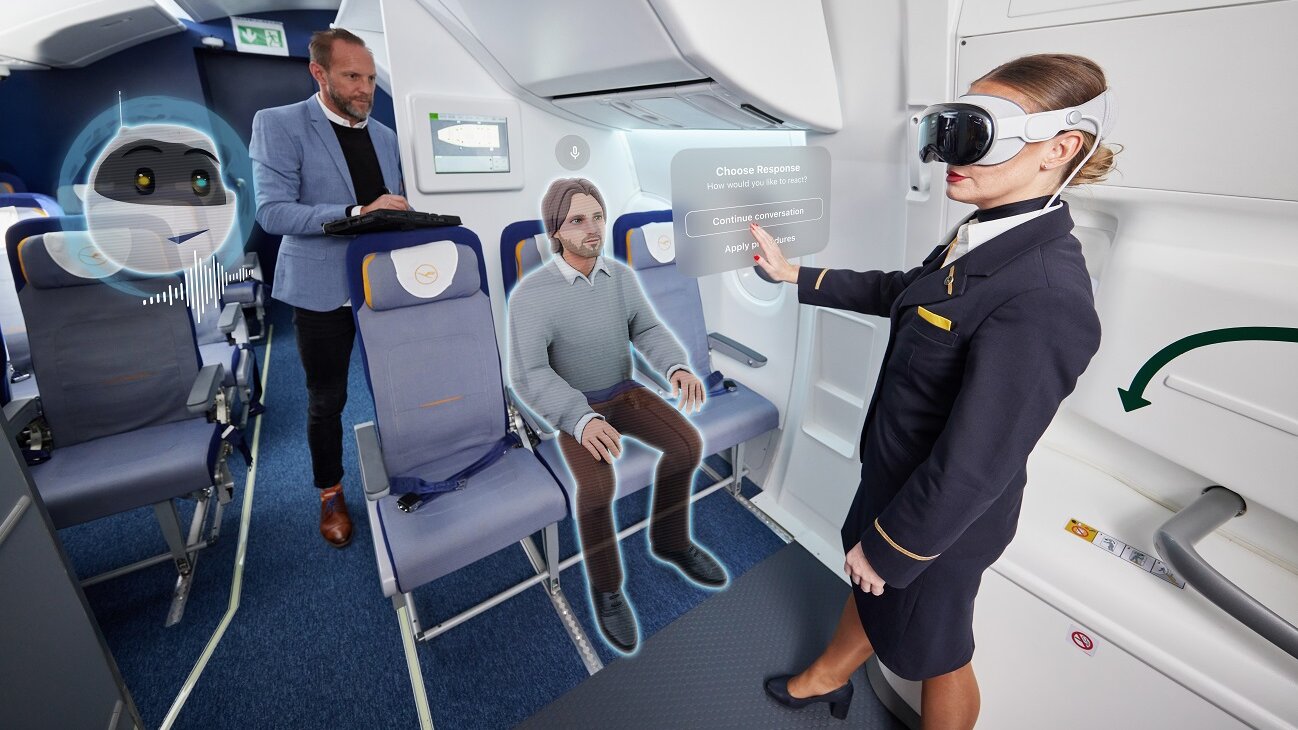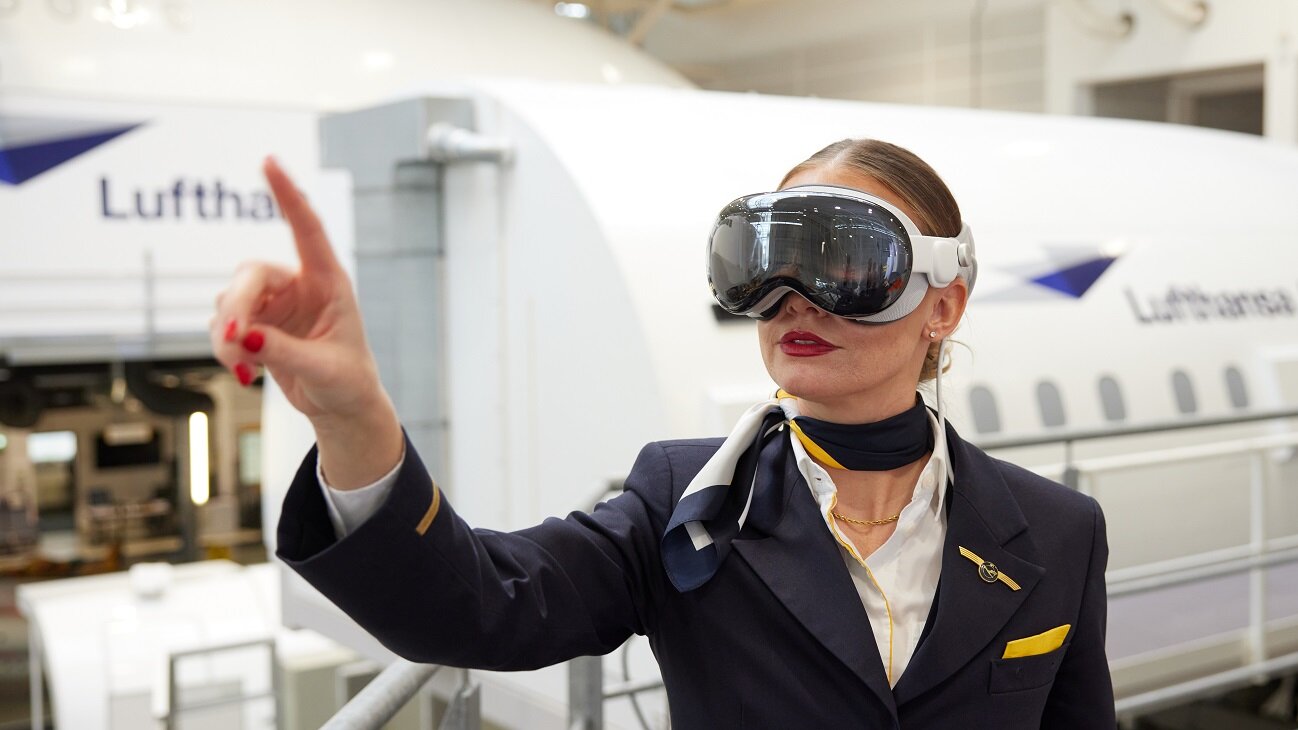In close cooperation with Apple and Darmstadt-based 3spin Learning, Lufthansa Aviation Training (LAT) is taking crew training to a new dimension. While training for crews has traditionally been accomplished analog and lacking in surprises for trainees, concepts will noticeably evolve in the future with the help of Apple's Vision Pro based on its advanced technology. The jointly developed application will initially focus on soft skills training.
Virtual Reality (VR) has played a significant role in LAT's training routine for several years. Currently, 20,000 training sessions are conducted annually at two VR hubs in Frankfurt and Munich, contributing to higher training efficiency and cost savings. The merging of the virtual world and reality has been limited, but Apple's Vision Pro opens up new possibilities based on the available technology.
As the world's first application in the field of aviation training, a de-escalation training specifically for Vision Pro has been realized. This scenario is particularly suitable because it allows for the simulation of varying, situational passenger behavior using Artificial Intelligence (AI) while considering the reactions of the crews. Prior to the official launch in the US in early February 2024, Apple granted the opportunity to extensively test the designed software.

We are excited about the new possibilities that Apple's Vision Pro offers. LAT aims to actively unlock the potential of this advanced technology for aviation training.
Gilad Scherpf
Senior Director Aviation Training Development Lufthansa Group
The training utilizes the innovative features of Apple’s Vision Pro in "Spatial Computing" to depict realistic situations in an overlay of virtual cabin environment and the real world in the training center. By integrating AI algorithms, the learning content is highly individualized and tailored to the needs of the trainees and thus enables effective and efficient training.
Trainees receive real-time feedback from instructors, who also get the ability to adjust situations and passenger behavior. The ultimate goal is to individually promote the required competencies of the crews. No two trainings are alike.



